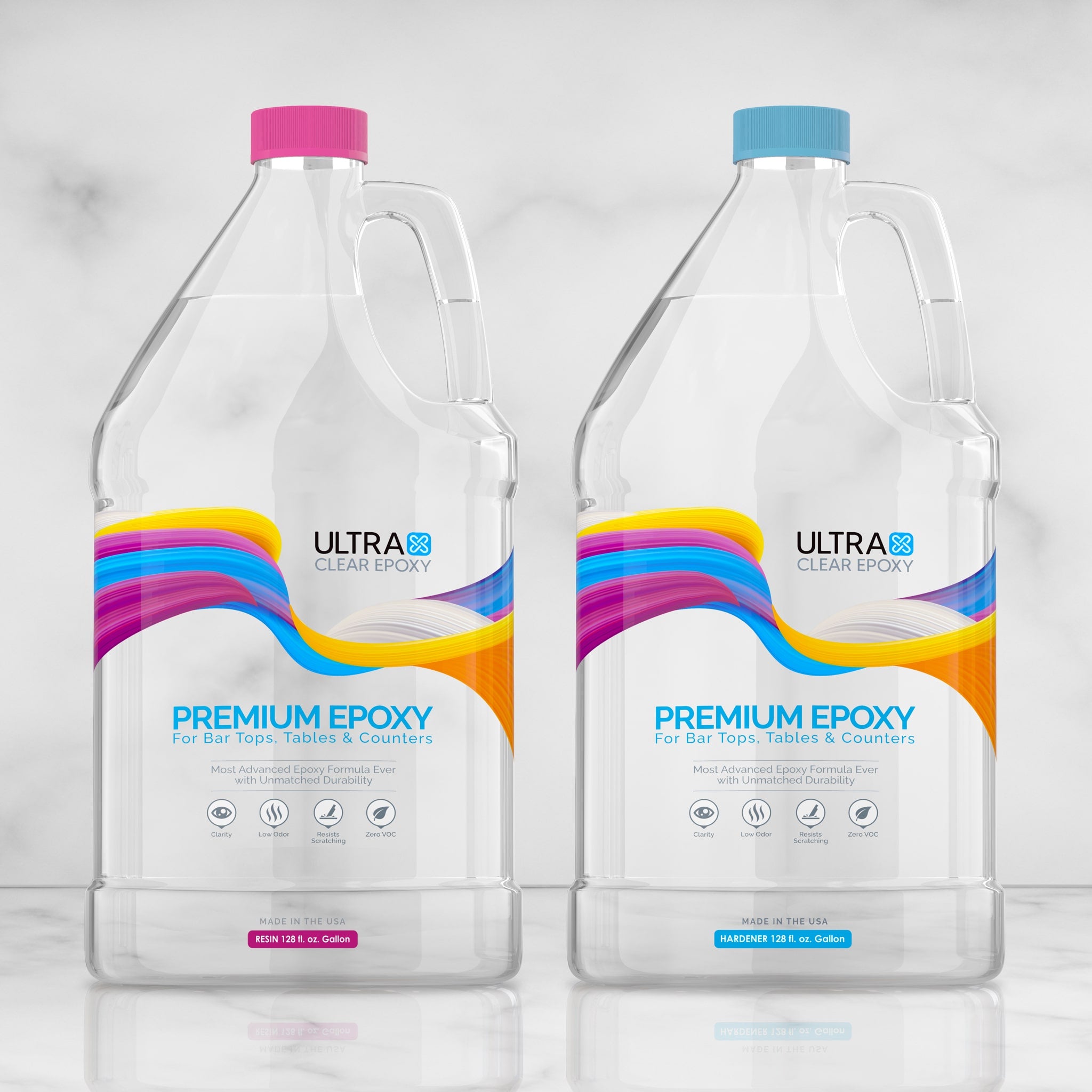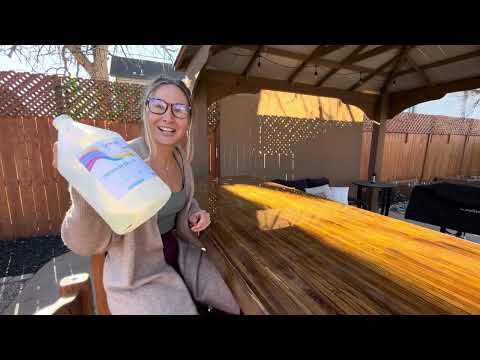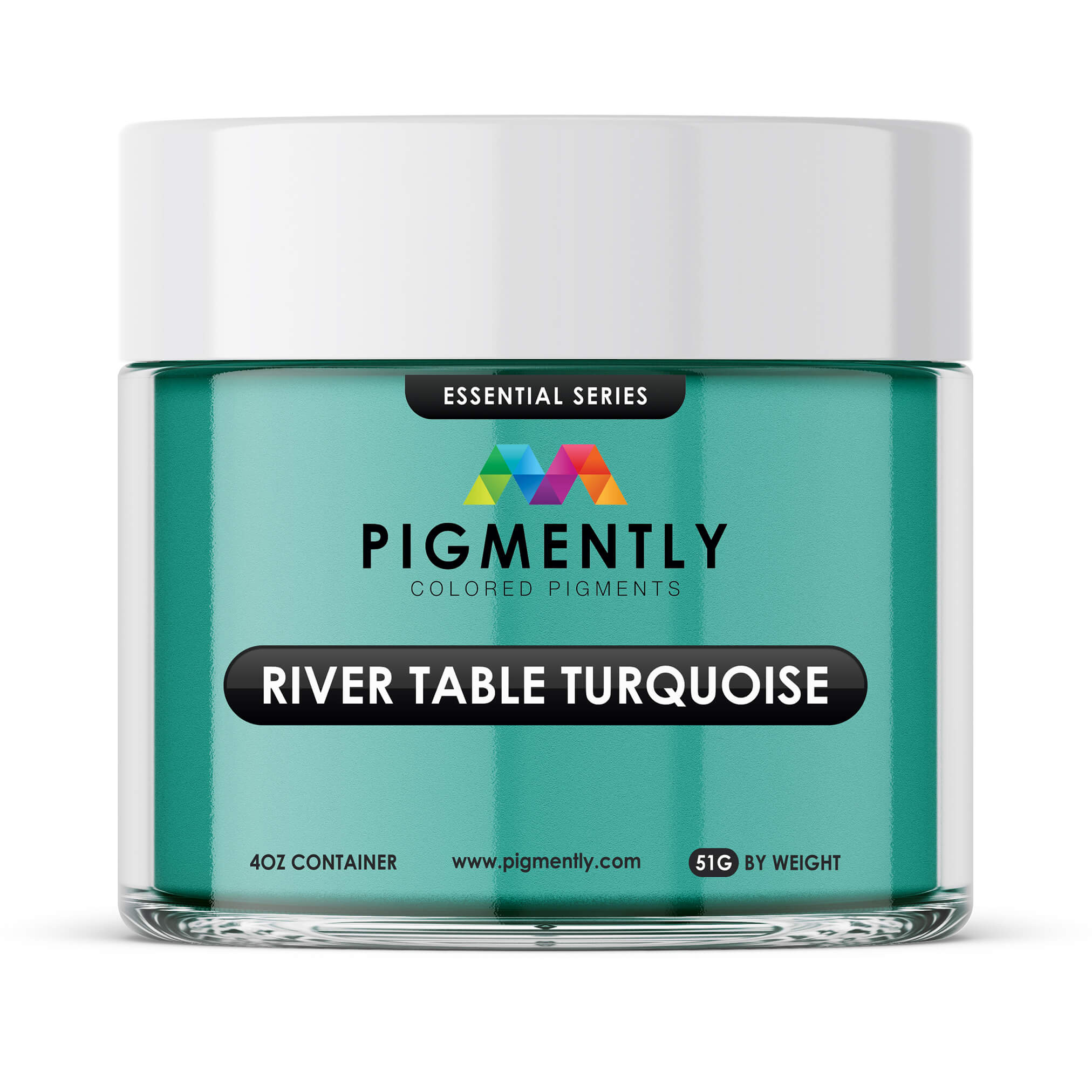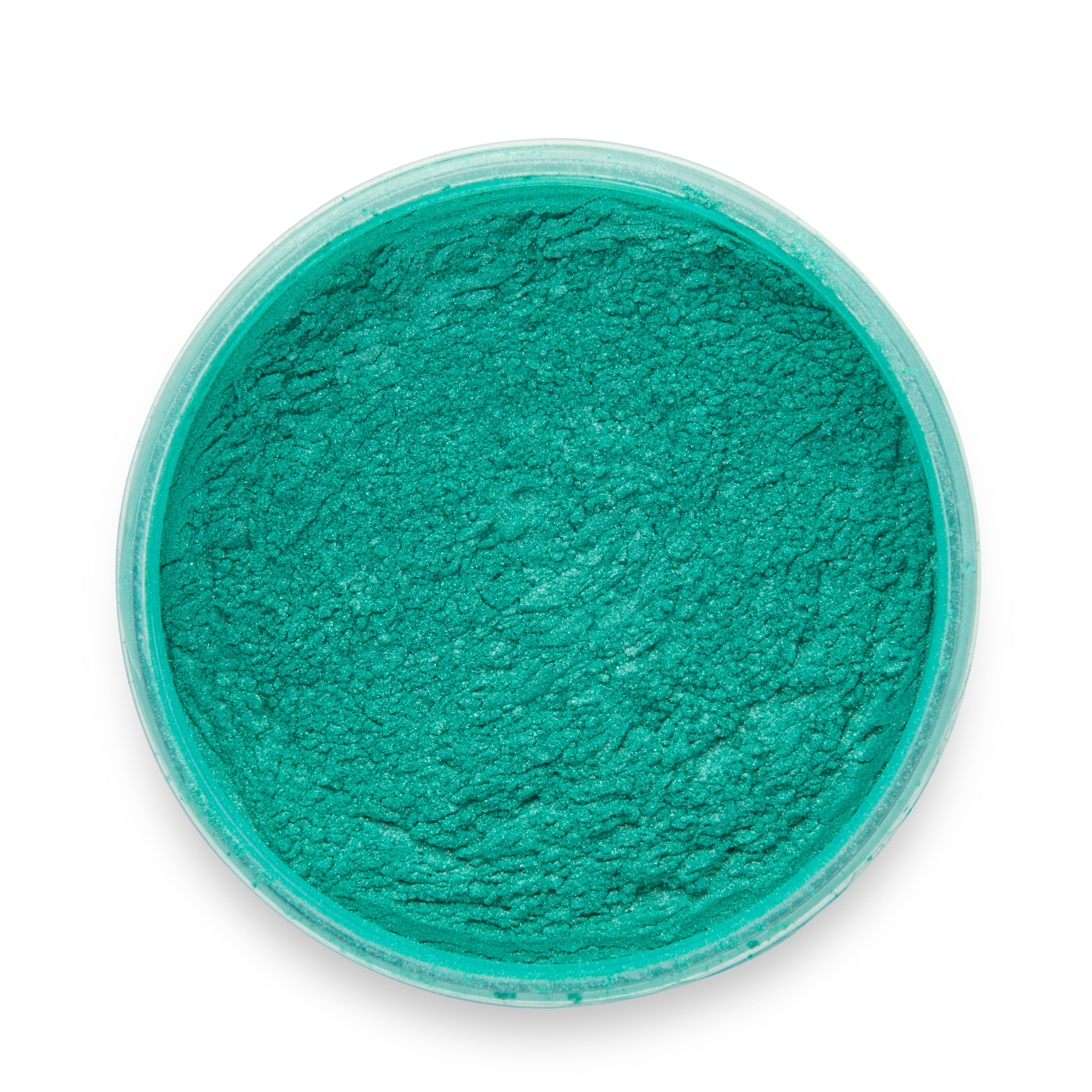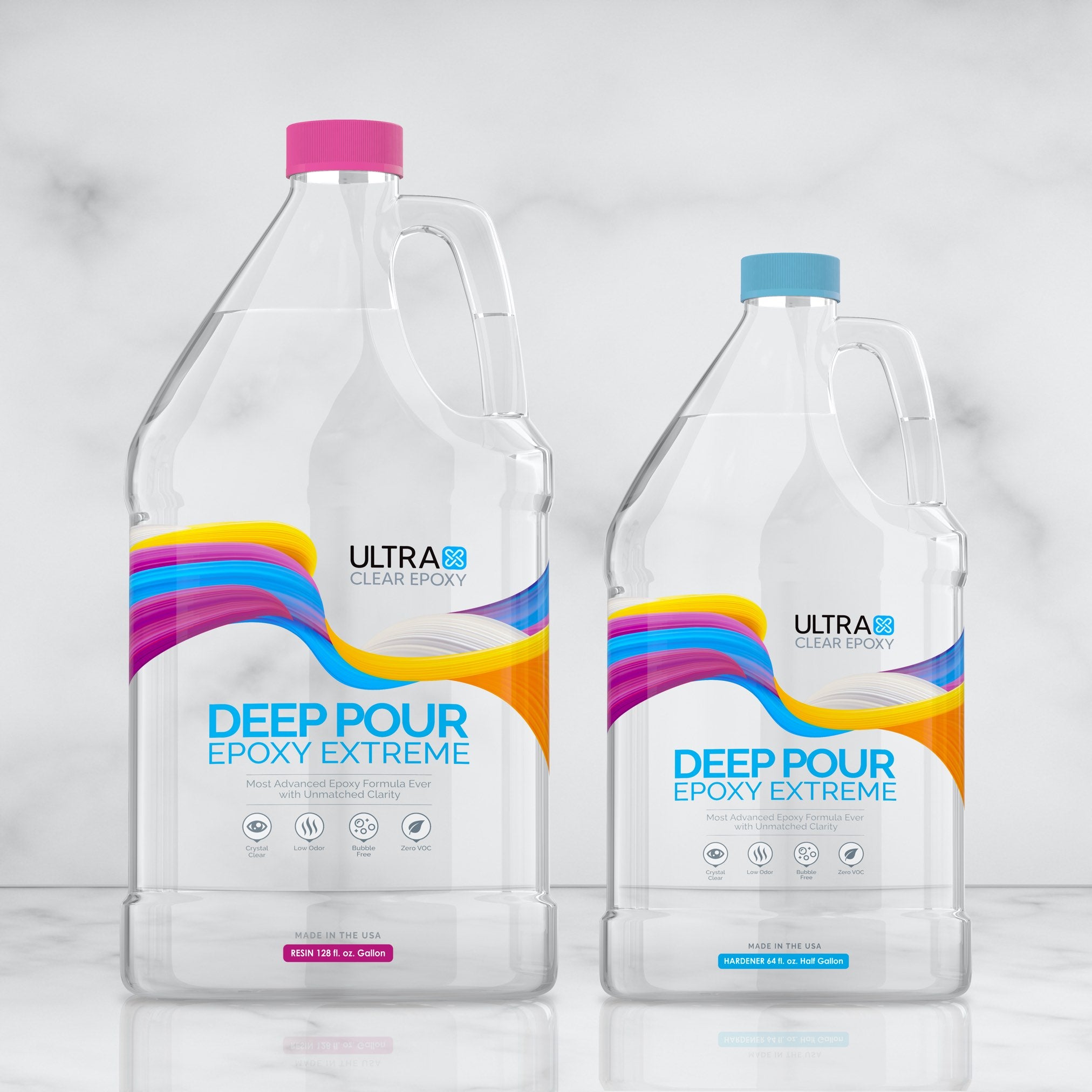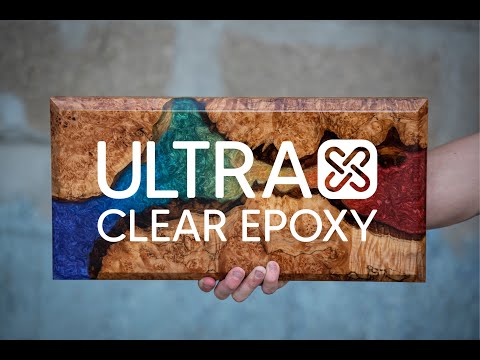When it comes to epoxy resin, the most unusual phase of the process is curing and bonding. Most users don't fully understand—nor do they need to—how it actually works. "It just does."
Today, we'll be covering a few more of the questions we occasionally receive about epoxy resin, specifically those involving bonding or curing.
To see our answers to previous Curing FAQs, click here!
Epoxy resin FAQs: Bonding and curing
Below, we'll be answering several questions related to curing and bonding. Here's a list of what we cover in this particular article:
We'll answer each of these questions one-by-one, starting from the top.

Question #1: Can epoxy go over granite?
Absolutely. Epoxy is a great way to seal a granite surface, giving it a durable, waterproof exterior with high clarity so that the granite is still cleanly visible.
Our UltraClear Bar & Table Top Epoxy is perfect as a finish for granite surfaces.

Question #2: Can you pour resin on glass?
Yes, resin can be poured on glass and will bond with it easily. Give the glass surface a light sanding first for a nice, resilient finish.

Question #3: Can you apply epoxy over formica?
Yes, you can apply epoxy to formica laminate.
For a list of other materials that epoxy resin can bond to, check out our UltraClear Bar & Table Top Epoxy page.

Question #4: Can epoxy stick to epoxy without sanding?
This depends on the state of the epoxy that's already been applied.
If the epoxy has been recently poured and isn't fully cured, an additional layer will easily mesh with the prior one to reform as a complete finish.
If the epoxy you want to apply to is already cured, you'll need to sand it lightly to make sure it has microscopic grooves/scratches to latch onto.
Applying epoxy to an epoxy layer without a light sanding can reduce the tightness of the bond between both layers, so we recommend sanding any cured epoxy finishes before applying more.

Question #5: How can I make my epoxy stick better?
Sanding your substrate surface is the absolute best and simplest way to make epoxy bond better with the substrate.

Question #6: Why is my epoxy still tacky after 24 hours?
This is usually caused by one of two issues: either the epoxy wasn't measured in the appropriate proportions, or the epoxy wasn't given the right kind of environment to cure in.
To avoid the measuring problem, just make sure you carefully measure the amounts. We suggest using graduated mixing containers to get an accurate volume total as you pour in each component.
You'll find one-quart and five-quart graduated mixing containers in our store.
To avoid the environmental issues, you need to make sure the space in which your epoxy is curing is neither too cold nor too humid.
Most epoxy resins cure best at around 75°F. Keeping your space within several degrees of that is great for curing speed. Secondly, epoxy hates humidity while curing. Try to maintain a humidity level of 60% or below to help it cure at a regular pace.

Question #7: Why is my epoxy still sticky after a week?
The answer to this is essentially the same as for Question 6. Most likely, the epoxy wasn't measured properly or didn't have a good climate to cure in.
It's worth noting that mixing ratios for epoxy components can vary by brand and epoxy type, so always check the manufacturer's instructions to ensure you know how much of each component you're supposed to use.
For example, our UltraClear Bar & Table Top Epoxy uses a 1:1 ratio, but our Deep Pour Epoxy uses a 2:1 ratio.
The other possibility is that it hasn't been curing in the proper environmental settings. Keep your temperatures close to 75°F and your humidity below 60% for optimal curing.

Question #8: What do you seal epoxy countertops with?
Well, typically epoxy is the seal for a countertop. If you want to add something more on top of it, your best bet is just another topcoat of epoxy.
If you're referring to the substrate prior to your epoxy flood coat, you'll seal that with an epoxy seal coat first. This will remove most air bubbles and result in a stronger, cleaner finish.
To give epoxy an additional topcoat seal, simply sand the original layer lightly, then pour a new layer over the sanded one. If handled properly, it should cure cleanly and look good as new.
Additional Resources
We hope these answers have clarified some things for you. Here's a list of additional resources that you may find useful.
- Epoxy: Proper storage, shelf life, and preventing "yellowing" - Learn how to store your epoxy components when you're not using them.
- What happens if I pour epoxy too thick? - Knowing how thick you can safely pour your epoxy per layer can save you trouble later.
- How long does epoxy resin last? - Learn how long epoxy resin should last and why you should choose a premium epoxy despite higher upfront costs.

Have questions? Want advice? Contact us!
If you have any questions about how epoxy resin bonding or curing, or if you'd like assistance in planning an epoxy project, please reach out to us at UltraClear Epoxy—our epoxy experts are ready to assist!
You can contact us via phone or email here. During business hours, you can also text chat online with one of our resin specialists by clicking the Help button at the bottom of your screen.
In our online store, you'll find a variety of useful tools and supplies, ideal for resin projects, plus our award-winning UltraClear Bar & Table Top Epoxy and our UltraClear Deep Pour Epoxy.



